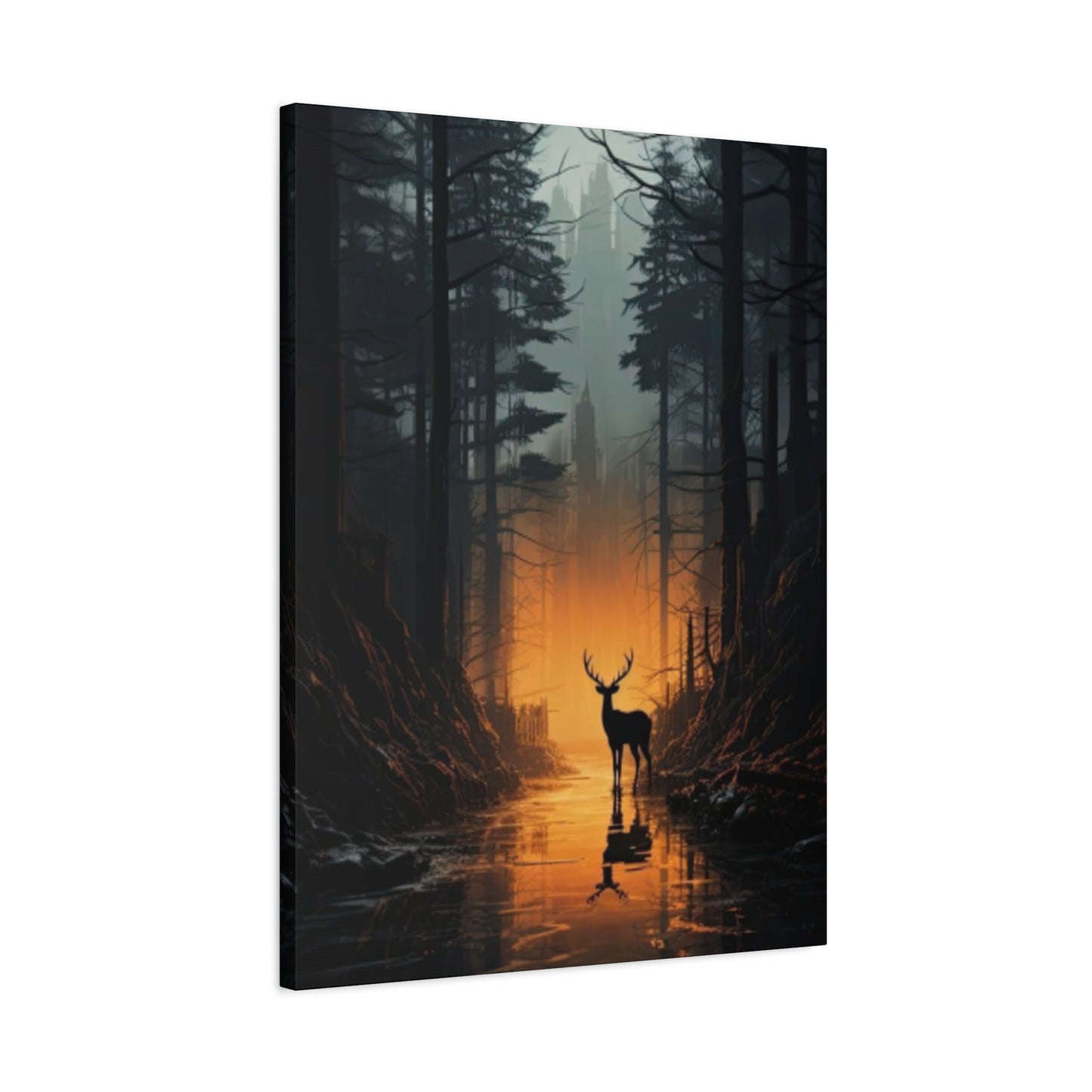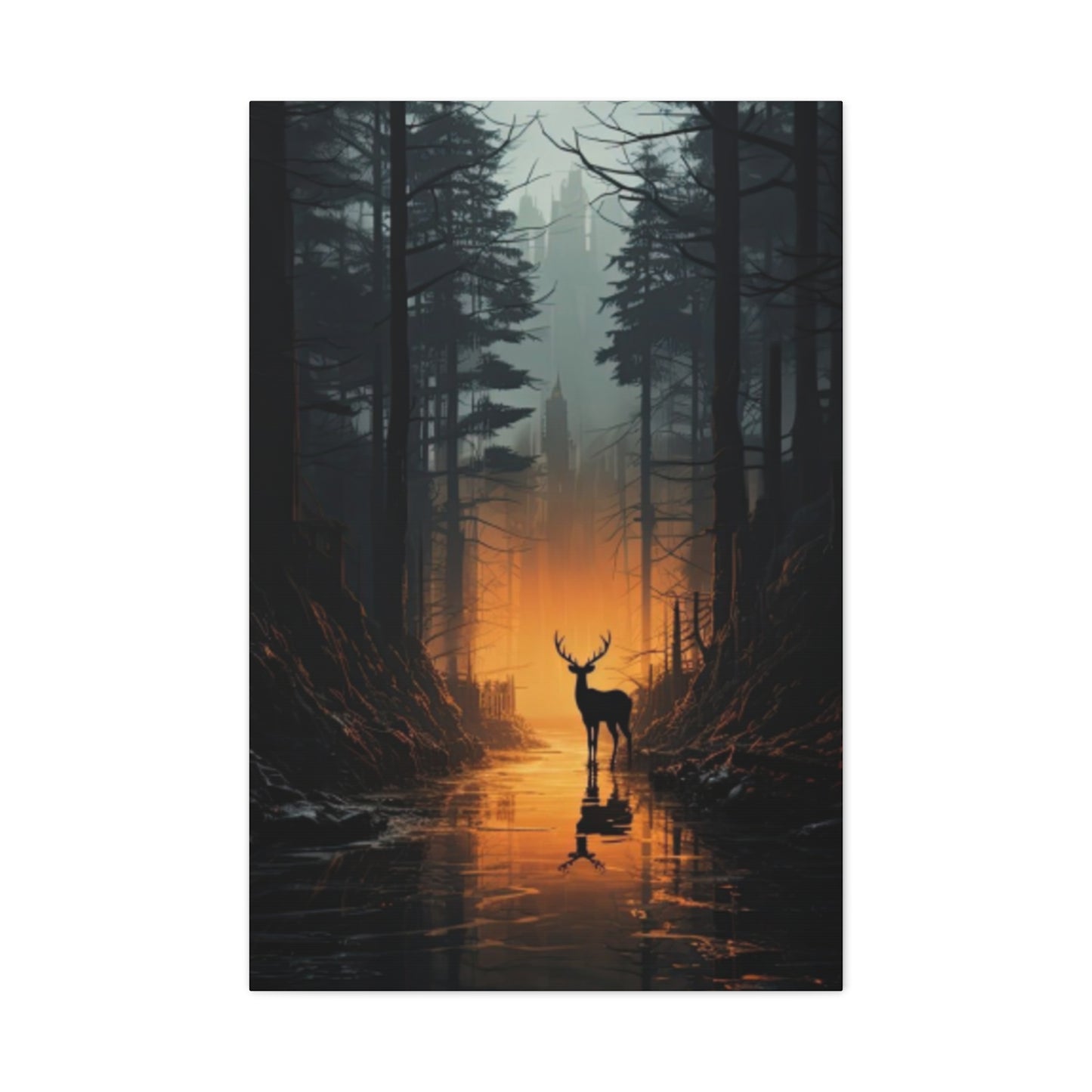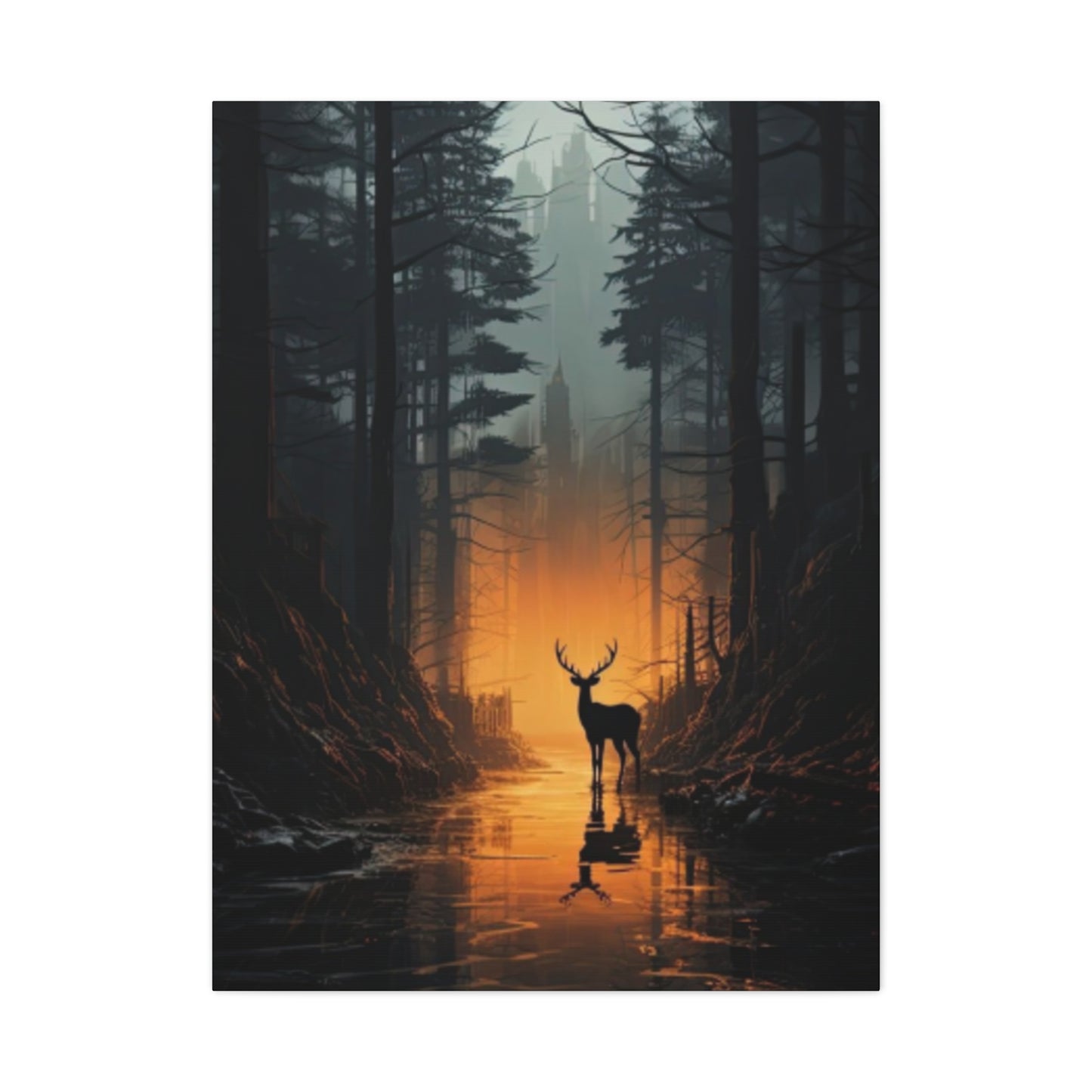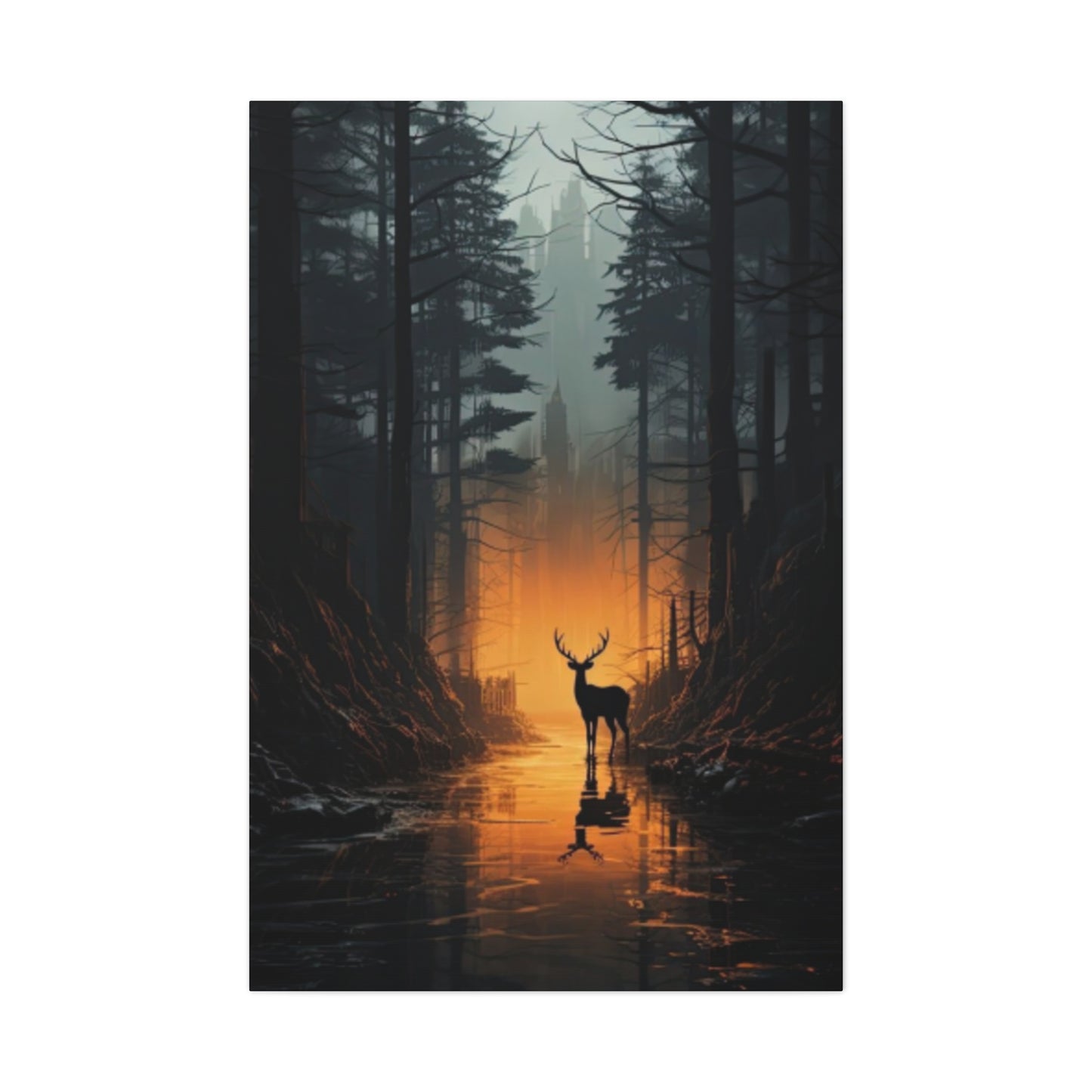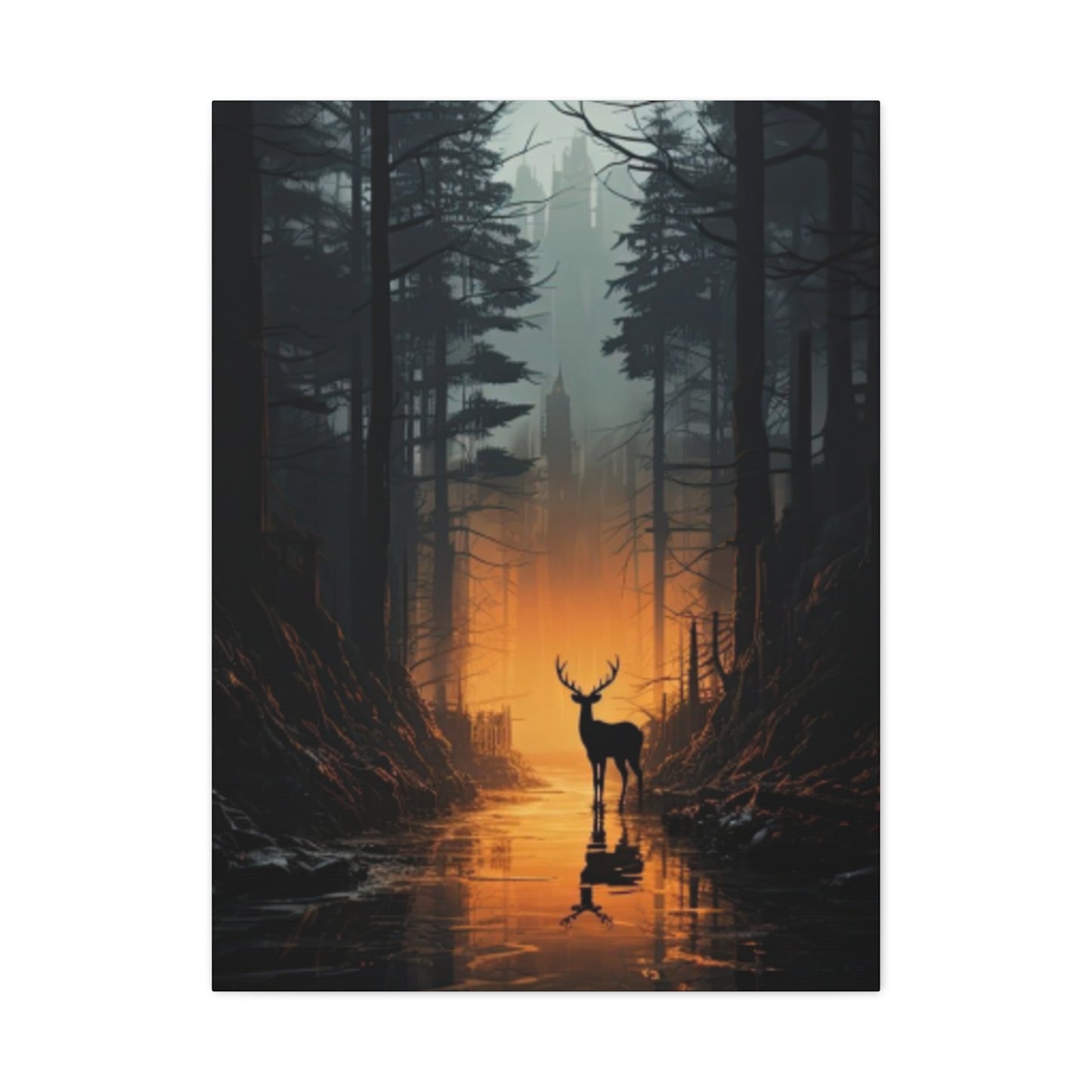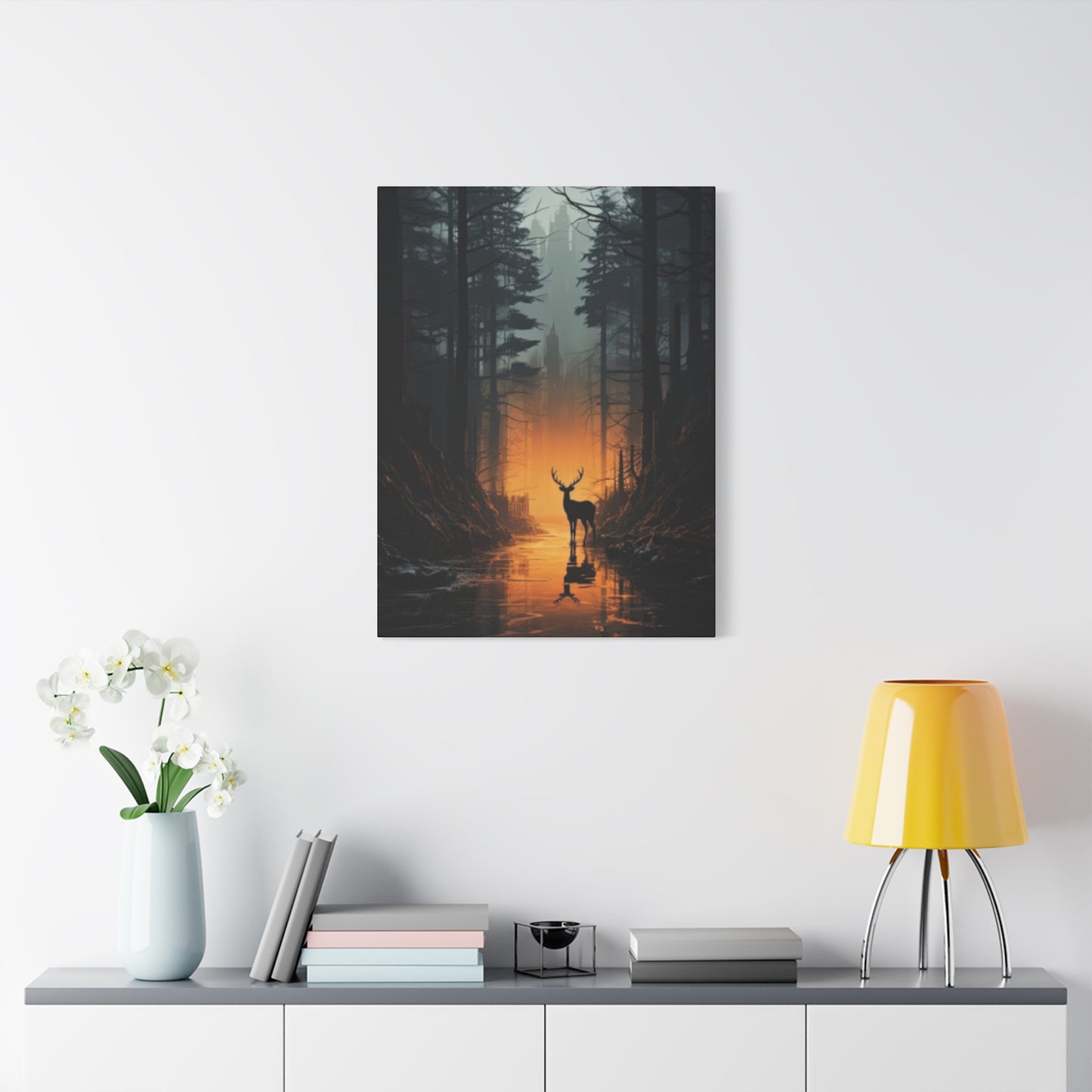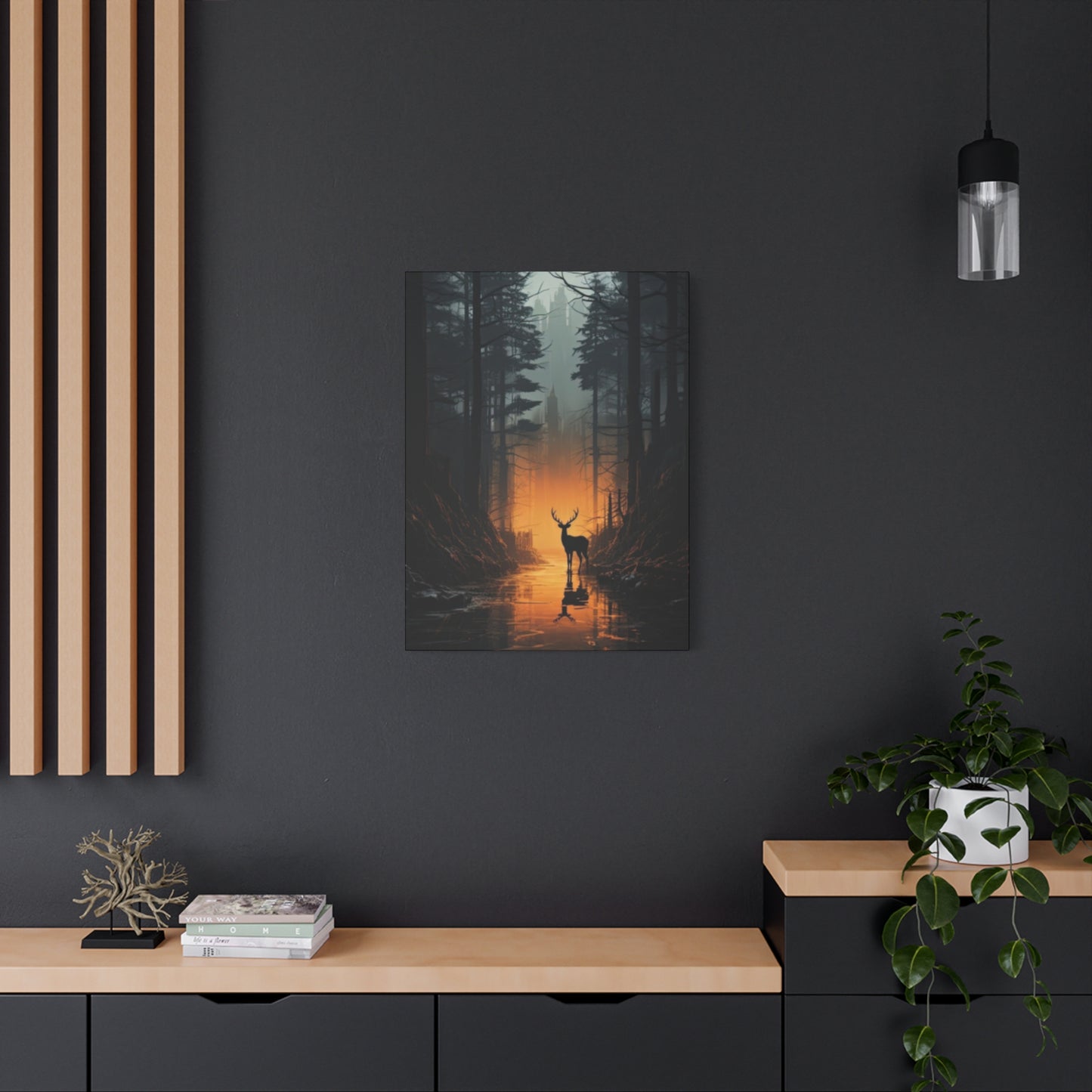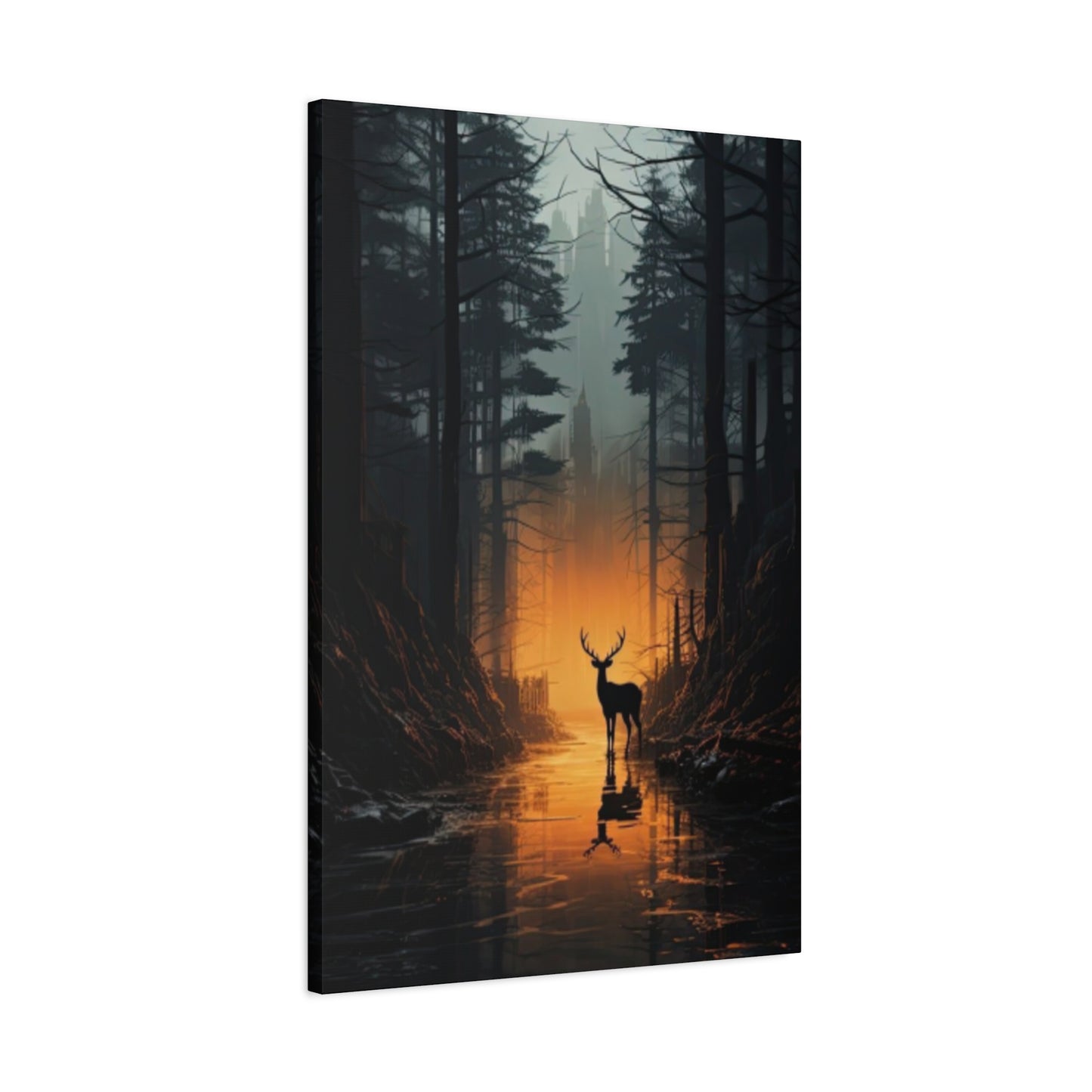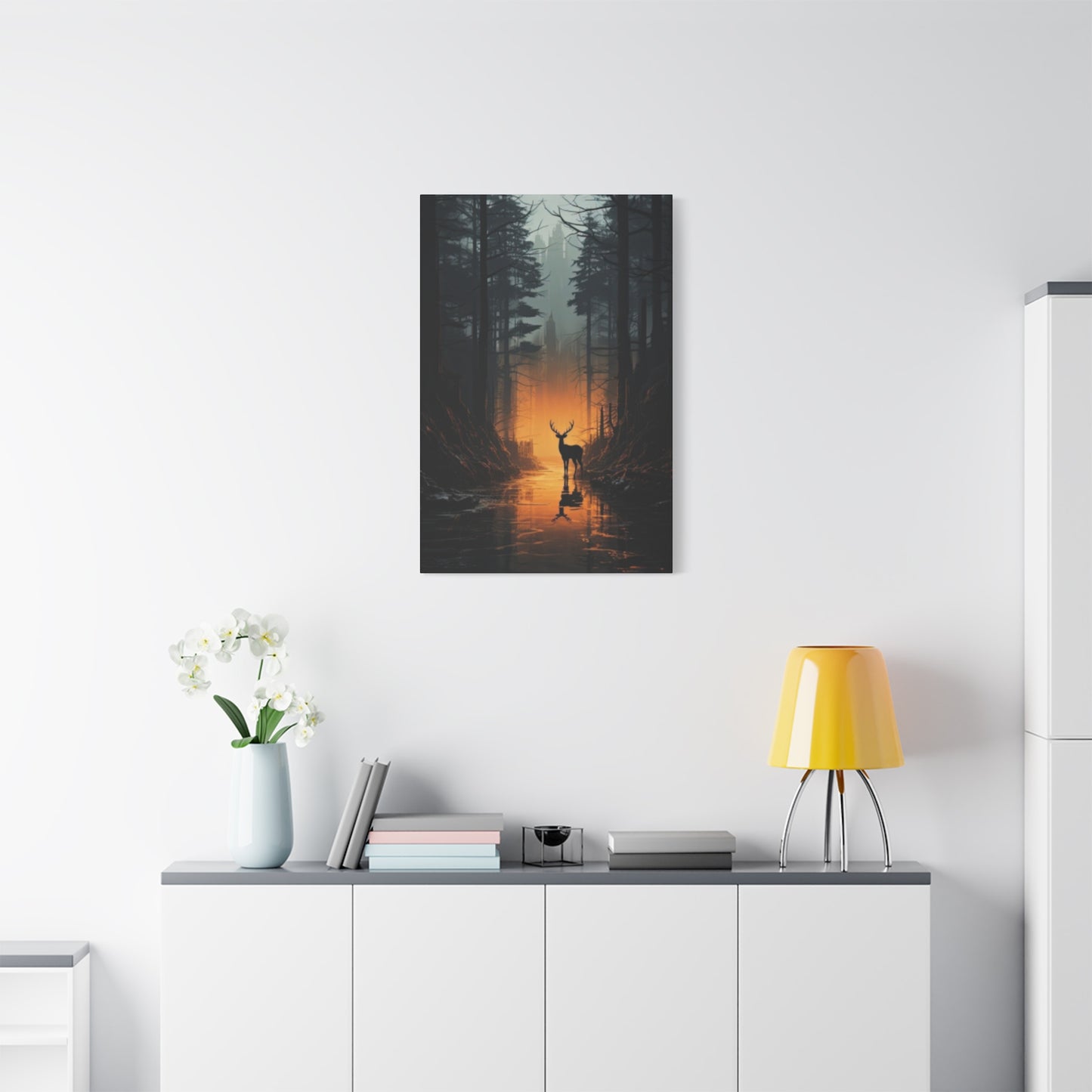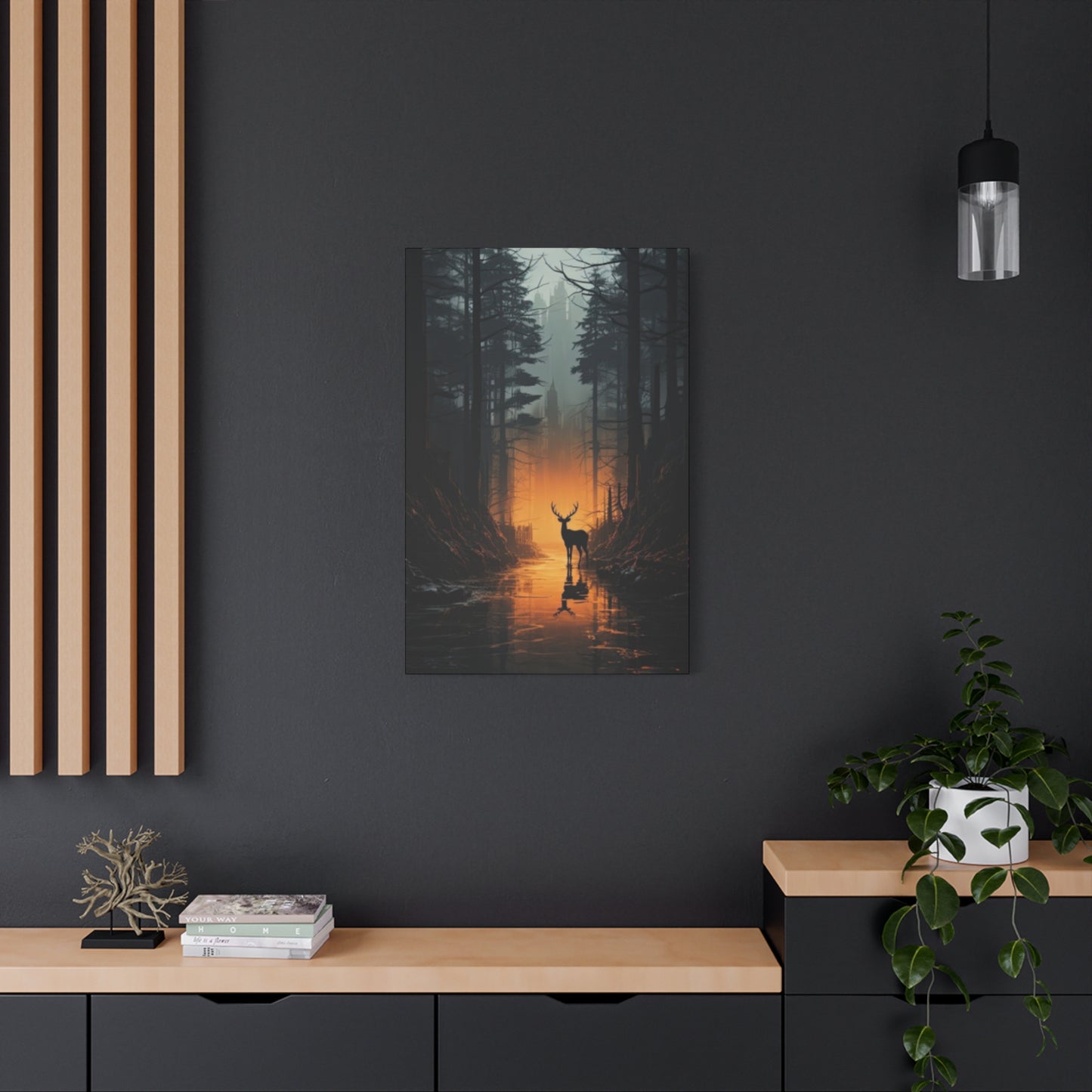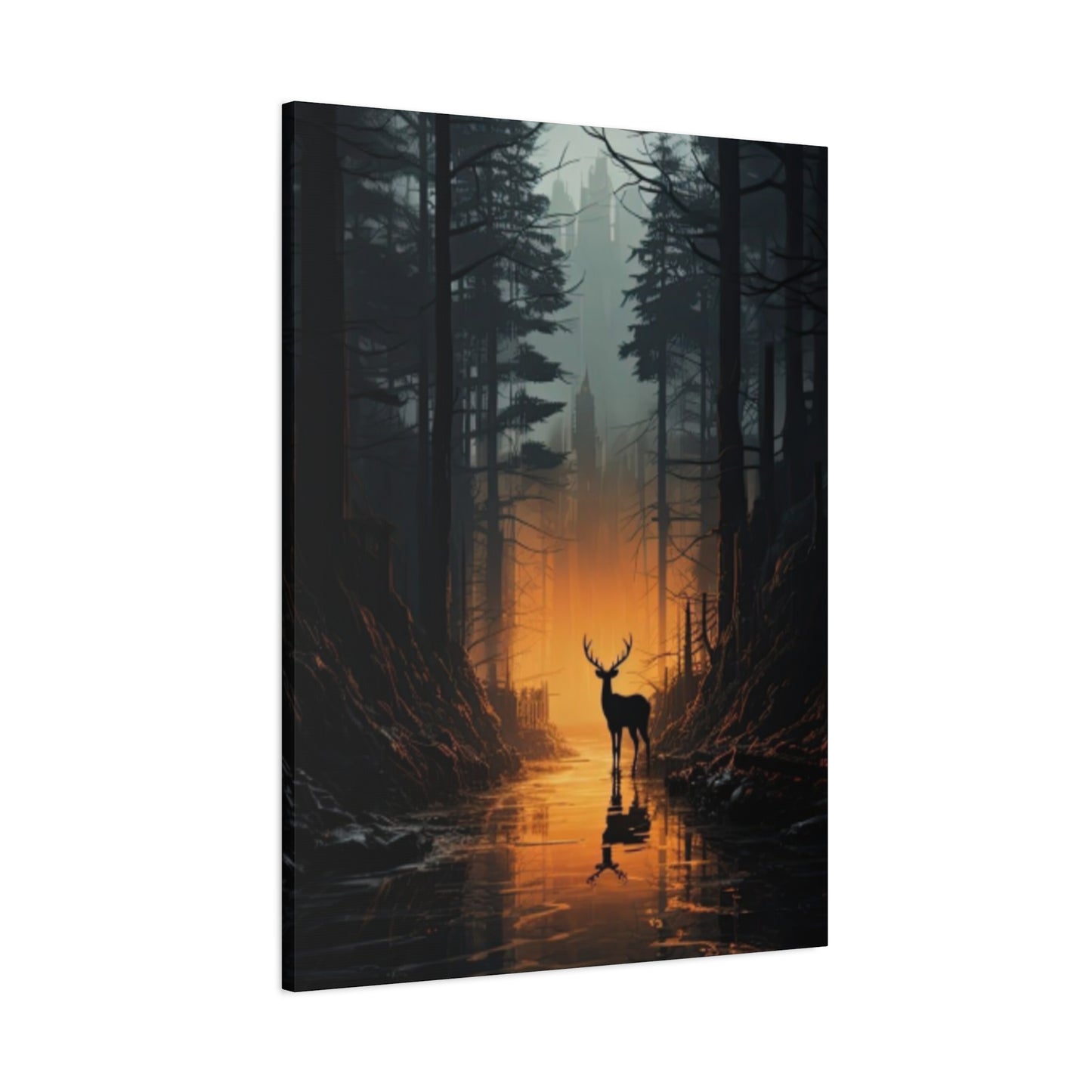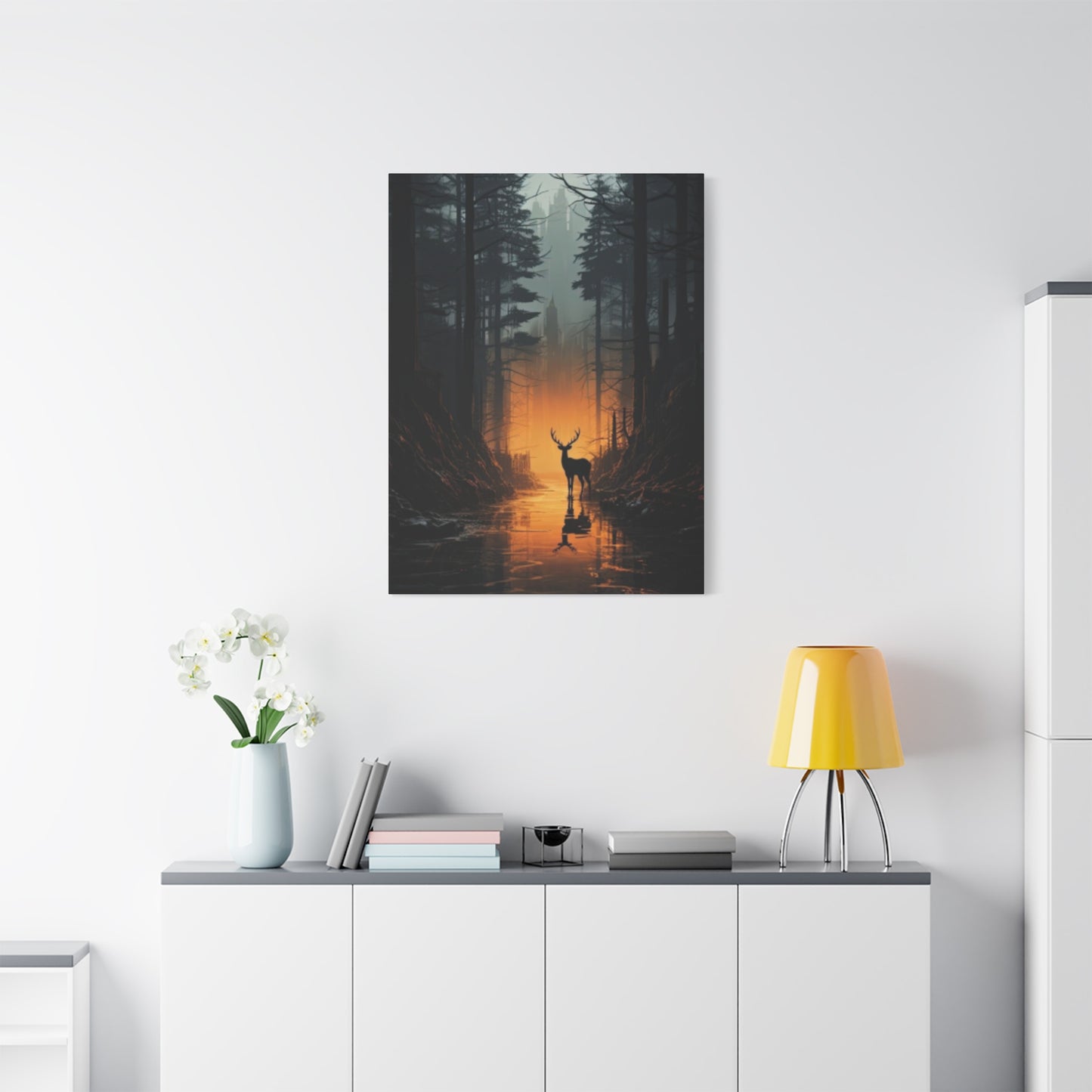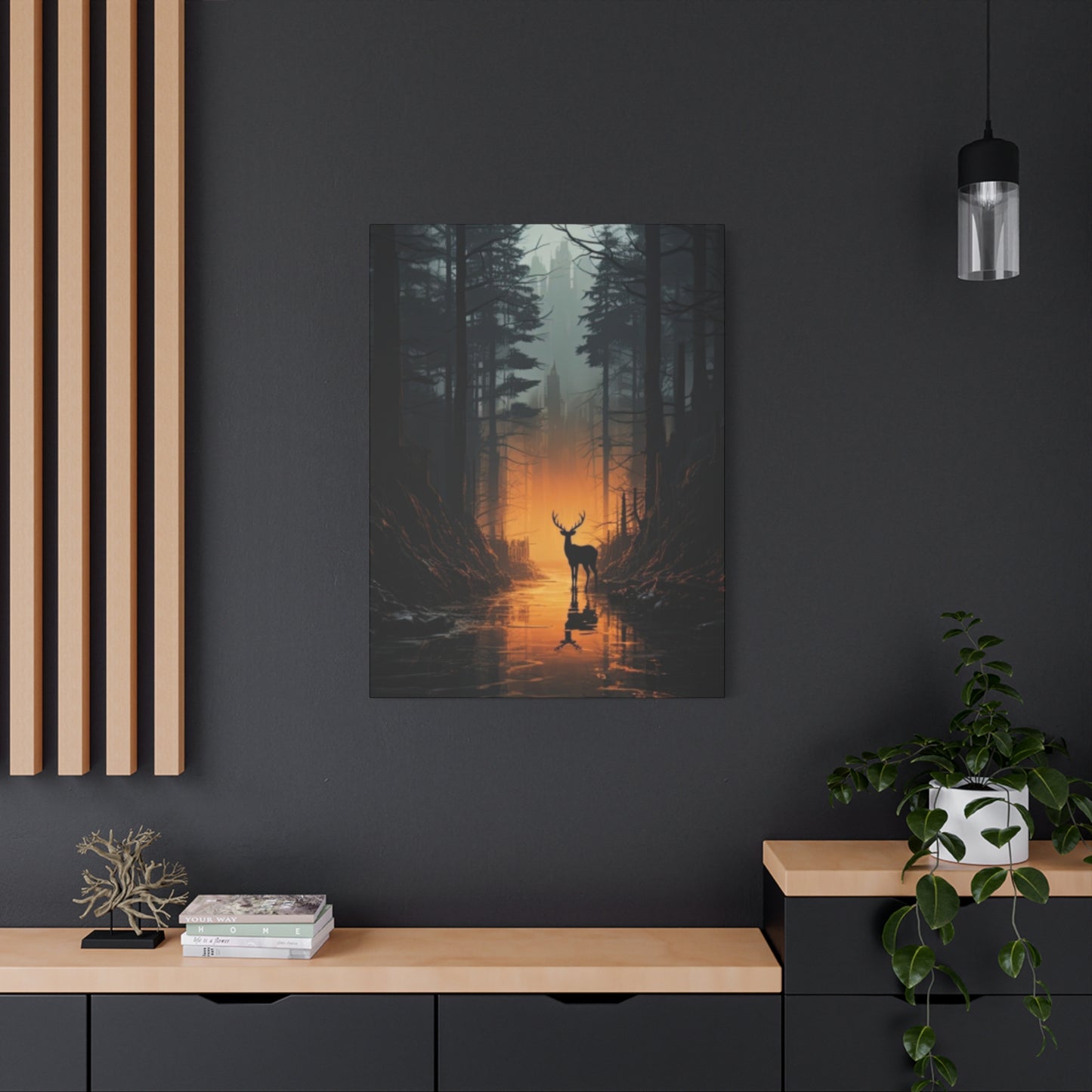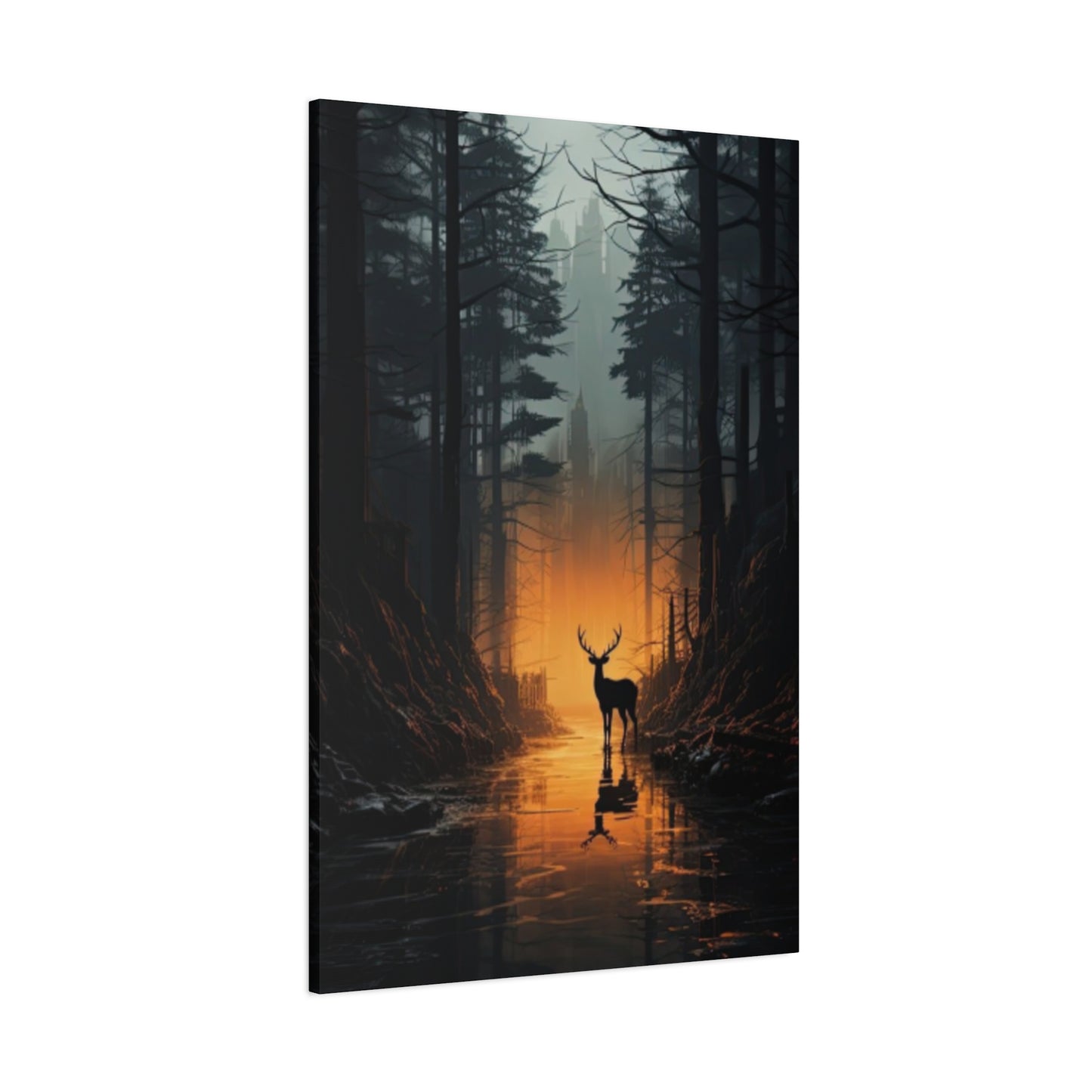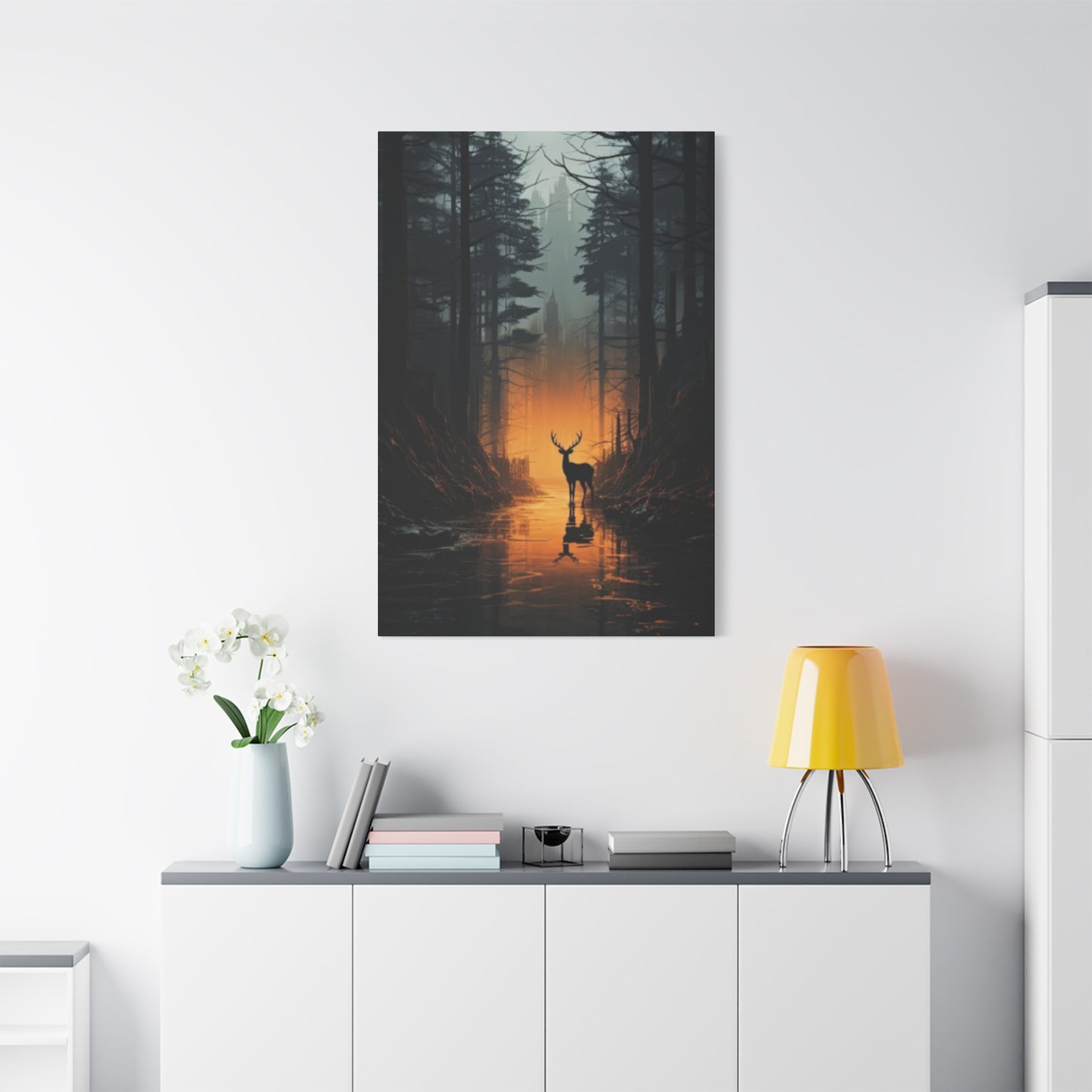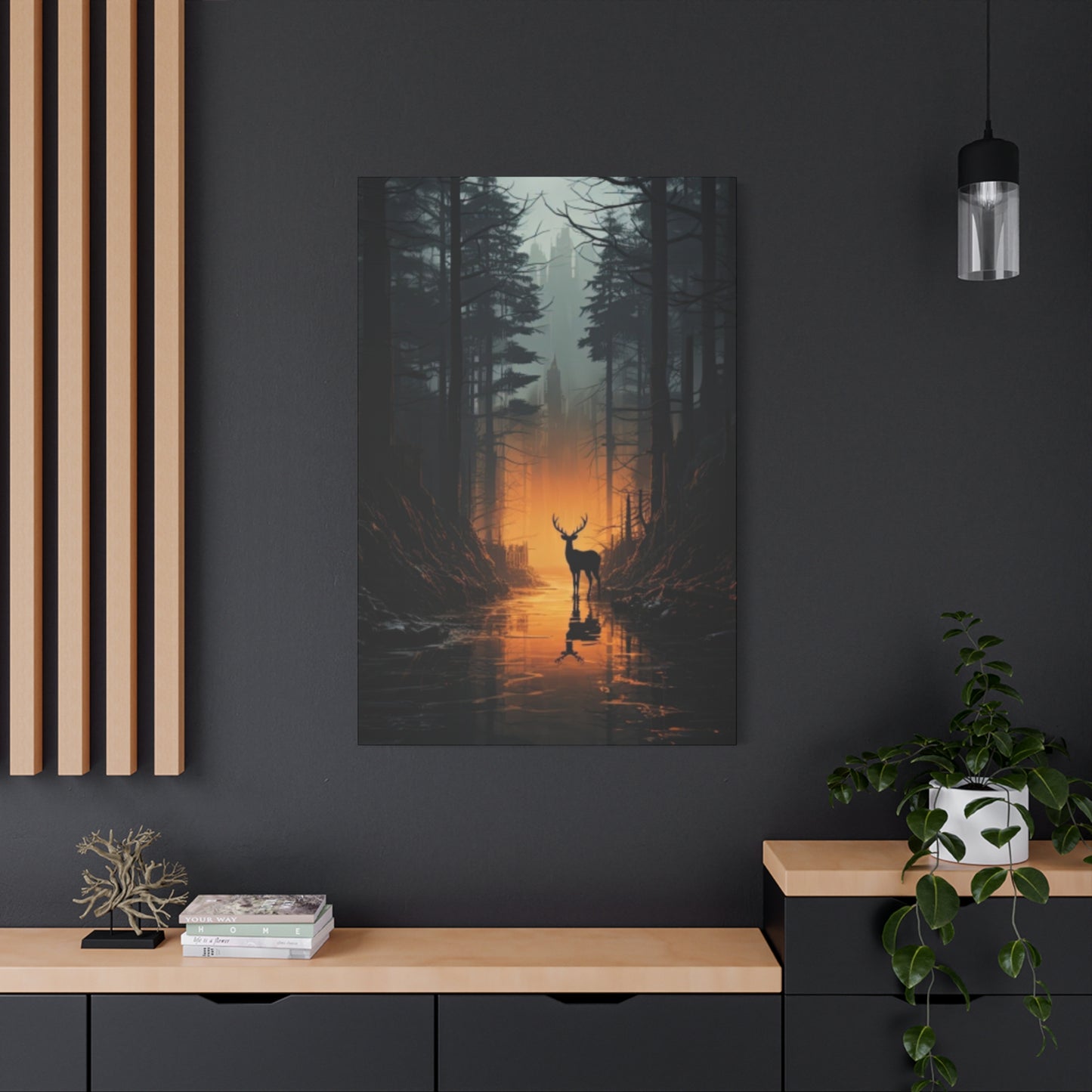Dark Tropical Forest Wall Art: Creating Mystical Atmosphere Through Nature's Shadows
The captivating world of dark tropical forest wall art offers homeowners and decorating enthusiasts an extraordinary opportunity to transform their living environments into mystical sanctuaries. These powerful artistic expressions capture the enigmatic beauty of dense jungle landscapes, where sunlight barely penetrates the thick canopy above, creating an atmosphere of mystery and natural wonder. The growing popularity of this art form stems from its unique ability to evoke emotions ranging from tranquility to adventure, making it an ideal choice for those seeking to add depth and character to their walls.
Dark tropical forest wall art represents more than just decorative pieces; it embodies the raw power and untamed beauty of nature's most mysterious environments. These artworks transport viewers into shadowy realms where ancient trees reach toward hidden skies, exotic plants flourish in filtered light, and the very air seems thick with possibility and wonder. The artistic interpretation of these dense woodland environments creates a visual narrative that speaks to our deepest connections with the natural world, offering both escape and contemplation in equal measure.
The sophisticated appeal of dark tropical forest wall art lies in its ability to create dramatic focal points while maintaining an organic sense of harmony within any room. Unlike brighter, more conventional nature artwork, these darker interpretations offer a mature, refined aesthetic that complements contemporary and traditional decorating schemes alike. The rich palette of deep greens, mysterious shadows, and subtle highlights creates visual depth that can make even the smallest rooms feel more expansive and intriguing.
Modern homeowners increasingly gravitate toward dark tropical forest wall art because it provides an instant connection to nature without overwhelming existing decor elements. These artworks serve as conversation starters, meditation focal points, and sources of daily inspiration, reminding viewers of the incredible diversity and beauty found in our planet's most remote and mysterious corners. The psychological benefits of incorporating such natural imagery into living environments have been well-documented, with studies showing improved mood, reduced stress levels, and enhanced creativity among individuals who surround themselves with nature-inspired artwork.
Mystery and Mood: Dark Tropical Forest Wall Art
The mysterious quality inherent in dark tropical forest wall art creates an unparalleled mood-setting capability that transforms ordinary rooms into extraordinary environments. These artistic interpretations of shadowy jungle landscapes tap into our primal fascination with the unknown, creating visual narratives that suggest hidden pathways, secret clearings, and ancient mysteries waiting to be discovered. The interplay between visible elements and suggested depths creates a dynamic viewing experience that changes throughout the day as natural light shifts and artificial lighting creates new shadow patterns.
The psychological impact of mysterious forest imagery extends far beyond simple aesthetic appreciation. These artworks engage the viewer's imagination, encouraging mental exploration of the depicted landscapes and creating a sense of adventure even within the confines of familiar domestic environments. The carefully balanced composition of light and shadow in quality dark tropical forest wall art creates visual tension that maintains viewer interest while promoting relaxation and contemplation. This unique combination of stimulation and tranquility makes such artwork particularly effective in bedrooms, meditation rooms, and other retreats where peace and inspiration are equally valued.
The mood-enhancing properties of dark tropical forest wall art stem from its ability to create visual depth and complexity without overwhelming the viewer. The layered compositions typical of this art form mirror the complex ecosystem relationships found in actual tropical forests, where every element depends on and supports every other element. This interconnectedness translates into artwork that feels alive and dynamic, creating emotional resonance that static, single-subject pieces often lack. The mysterious quality of these forests, where much remains hidden beneath the canopy or behind curtains of vegetation, allows viewers to project their own interpretations and experiences onto the artwork.
The sophisticated use of negative space in dark tropical forest wall art contributes significantly to its mysterious appeal. Areas of deep shadow and suggested depth create breathing room within complex compositions, allowing the eye to rest while the mind continues to explore the implied landscapes beyond the visible frame. This masterful balance between revealed and concealed elements creates artwork that rewards extended viewing, revealing new details and relationships each time it is contemplated. The mysterious nature of these forest scenes makes them ideal for creating intimate, contemplative environments where creativity and reflection can flourish.
Color psychology plays a crucial role in the mood-creating power of dark tropical forest wall art. The predominant deep greens found in these pieces are associated with growth, harmony, and emotional balance, while the darker tones suggest mystery, sophistication, and depth of character. The subtle variations in green hues, from the palest mint suggestions of filtered light to the deepest forest shadows, create emotional gradients that can influence the viewer's state of mind throughout the day. These carefully orchestrated color relationships make dark tropical forest wall art particularly effective for creating environments that support both active engagement and peaceful relaxation.
The temporal quality of dark tropical forest wall art adds another layer to its mysterious appeal. These artworks often suggest specific times of day – the dappled light of early morning, the deep shadows of midday, or the ethereal glow of twilight filtering through dense vegetation. This temporal suggestion creates a sense of narrative progression that keeps the artwork feeling fresh and engaging over time. Viewers may find themselves drawn to different aspects of the same piece depending on their mood, the time of day, or the season, creating a dynamic relationship between artwork and observer that enhances the overall decorating experience.
Bringing Depth with Dark Forest Scenes on Walls
Creating visual depth through dark forest scenes on walls requires careful consideration of both artistic composition and placement within the living environment. The layered nature of tropical forest landscapes naturally lends itself to creating the illusion of three-dimensional depth on flat surfaces, but maximizing this effect requires understanding how the human eye processes visual information and how architectural elements can be used to enhance or diminish the artwork's impact. Successful implementation of dark forest wall art involves creating sight lines that draw viewers into the composition while maintaining comfortable viewing distances that allow for full appreciation of the artwork's complexity.
The technical aspects of creating depth through dark tropical forest wall art begin with understanding the principles of atmospheric perspective, where elements in the foreground appear sharper and more detailed while background elements become increasingly hazy and muted. Master artists working in this genre employ sophisticated layering techniques that guide the viewer's eye through multiple levels of the composition, from prominently featured foreground elements like twisted root systems or broad leaf textures to mid-ground tree trunks and climbing vines, finally dissolving into mysterious background depths where forms become suggestions rather than explicit statements.
The strategic use of lighting effects in dark tropical forest wall art significantly enhances the perception of depth and dimension. Skilled artists manipulate the contrast between illuminated areas and deep shadows to create the impression of filtered sunlight penetrating the forest canopy at various angles and intensities. These lighting effects not only add visual interest but also create natural focal points that guide viewer attention through the composition in a deliberate, aesthetically pleasing manner. The interplay between light and shadow creates pockets of visual activity separated by restful darker areas, preventing viewer fatigue while maintaining engagement with the artwork.
Scale relationships within dark tropical forest wall art contribute substantially to the creation of convincing depth illusions. Large-scale foreground elements such as massive tree trunks or oversized tropical leaves create immediate visual impact while establishing a sense of scale that makes background elements appear appropriately distant. The gradual reduction in scale as elements recede into the composition creates a natural perspective that the human eye readily accepts as realistic, even in highly stylized or abstract interpretations of forest scenes. This careful attention to scale relationships allows even relatively small artworks to create the impression of vast, expansive forest environments.
The selection and placement of dark tropical forest wall art within architectural contexts can dramatically enhance or diminish the perception of depth and dimension. Hanging large-scale forest scenes on walls with adequate surrounding space allows viewers to step back and fully appreciate the layered composition, while smaller pieces may be more effectively displayed in intimate settings where closer viewing reveals intricate details and textures. The height at which artwork is hung, the presence of architectural elements like moldings or alcoves, and the interaction between artwork and furniture placement all influence how successfully the piece creates the desired depth illusion.
Color temperature variations within dark tropical forest wall art provide another powerful tool for creating visual depth and dimensional interest. Warmer tones in foreground elements appear to advance toward the viewer, while cooler tones in background areas naturally recede, creating spatial separation between different layers of the composition. The subtle manipulation of color temperature throughout the piece creates a sense of atmospheric depth that mirrors the way actual forest environments appear to the human eye, where distant objects take on cooler, bluish casts due to atmospheric filtering of warm light wavelengths.
Why Dark Tropical Forest Prints Captivate
The captivating power of dark tropical forest prints lies in their ability to simultaneously satisfy our desire for natural beauty and our fascination with mystery and the unknown. These artistic interpretations of dense jungle environments tap into deep-seated psychological responses that have evolved over millennia of human interaction with forest ecosystems. The visual complexity of tropical forests, with their intricate layering of vegetation, complex light patterns, and rich biodiversity, creates artwork that can be contemplated endlessly without becoming boring or predictable, ensuring long-term satisfaction with these decorative choices.
The scientific basis for our attraction to forest imagery can be traced to the biophilia hypothesis, which suggests that humans have an innate affinity for natural environments that supported our evolutionary development. Dark tropical forest prints satisfy this biological predisposition while adding layers of artistic interpretation that elevate the viewing experience beyond simple nature appreciation. The mysterious quality of these forest scenes engages our problem-solving instincts, encouraging mental exploration and imaginative engagement that keeps the artwork feeling fresh and relevant over time.
The artistic sophistication possible with dark tropical forest prints appeals to viewers who appreciate complexity and nuance in their decorative choices. Unlike simpler nature scenes that may be absorbed at a glance, these layered compositions reward careful examination and reveal new details with each viewing session. The interplay between realistic botanical elements and artistic interpretation creates pieces that function simultaneously as botanical studies, landscape art, and abstract compositions, appealing to viewers with diverse aesthetic preferences and educational backgrounds.
The versatility of dark tropical forest prints in complementing various decorating styles contributes significantly to their widespread appeal. The organic forms and natural color palettes found in these artworks harmonize beautifully with both traditional and contemporary furnishings, while the mysterious, sophisticated atmosphere they create can enhance everything from minimalist modern environments to richly appointed traditional rooms. This decorating flexibility makes dark tropical forest prints an excellent investment for homeowners who may change their decorating schemes over time but want artwork that will remain relevant and attractive regardless of stylistic evolution.
The emotional resonance of dark tropical forest prints extends beyond their visual appeal to encompass the psychological benefits associated with exposure to natural imagery. Research in environmental psychology has demonstrated that viewing representations of natural environments, particularly complex ecosystems like tropical forests, can reduce stress hormones, lower blood pressure, and improve overall emotional well-being. The specific characteristics of dark tropical forest scenes, with their emphasis on mystery and depth rather than bright, potentially overstimulating colors, make them particularly effective for creating calming, restorative environments within the home.
The narrative quality inherent in dark tropical forest prints creates emotional engagement that goes beyond passive appreciation of artistic technique or natural beauty. These artworks suggest stories of exploration, adventure, and discovery, allowing viewers to imagine themselves as participants in the depicted environment rather than mere observers. This participatory quality creates a personal connection between viewer and artwork that enhances the emotional value of the piece and contributes to long-term satisfaction with the decorating choice.
The seasonal relevance of dark tropical forest prints makes them particularly appealing in climates where natural greenery may be limited during certain times of year. These artworks provide a constant reminder of natural vitality and growth that can help counteract the psychological effects of winter months or urban environments with limited access to green environments. The timeless quality of tropical forests, which maintain their lush appearance throughout the year, creates artwork that remains seasonally appropriate regardless of external weather conditions or landscape changes.
Textures and Shadows in Tropical Forest Wall Art
The masterful handling of textures and shadows in tropical forest wall art creates visual richness that transforms flat surfaces into engaging, tactile experiences that invite both visual and imaginative exploration. The diverse textures found in tropical forest environments provide artists with an extraordinary palette of surface variations, from the smooth, waxy surfaces of broad leaves to the rough, deeply furrowed bark of ancient trees, the delicate fronds of ferns, and the twisted, rope-like appearance of jungle vines. Skillful artists capture these textural variations through careful attention to detail and innovative techniques that make viewers want to reach out and touch the depicted surfaces.
The interplay between textures and shadows in tropical forest wall art creates depth and visual interest that keeps viewers engaged over extended periods. Deep shadows cast by overlapping leaves create negative spaces that allow textured surfaces to stand out more dramatically, while filtered light highlights specific textural elements to create focal points within complex compositions. The contrast between smooth and rough textures, sharp and soft edges, and light and dark areas creates visual rhythm that guides the eye through the artwork in aesthetically pleasing patterns that never feel chaotic or overwhelming.
The psychological impact of textural variety in tropical forest wall art extends beyond simple visual appreciation to encompass tactile memory and sensory imagination. Viewers familiar with tropical environments may experience phantom sensations of humidity, temperature, and air movement when contemplating detailed textural representations, creating immersive experiences that transport the observer mentally to the depicted environment. Even viewers without direct tropical forest experience can imagine the tactile qualities of different surfaces, creating mental engagement that adds emotional depth to the viewing experience.
The technical challenges involved in successfully rendering textures and shadows in tropical forest wall art require sophisticated artistic skills and deep understanding of how light interacts with various surface types. Different textures reflect and absorb light in characteristic ways, creating signature shadow patterns that contribute to the overall realism and visual appeal of the artwork. Artists must carefully observe and accurately represent these light-texture interactions to create convincing representations that feel authentic rather than merely decorative.
The layering of textures within tropical forest wall art creates visual complexity that mirrors the intricate relationships found in actual forest ecosystems. Foreground textures appear sharp and detailed, allowing viewers to examine individual leaf structures, bark patterns, and other surface characteristics, while background textures become increasingly simplified and impressionistic, creating appropriate atmospheric perspective. This layering technique creates artwork that can be appreciated from multiple viewing distances, revealing different levels of detail as observers move closer to or farther from the piece.
The color relationships between different textural elements in tropical forest wall art contribute significantly to the overall aesthetic impact and emotional resonance of the piece. Warm-toned textures appear to advance toward the viewer, while cool-toned surfaces naturally recede, creating spatial relationships that enhance the three-dimensional illusion. The careful coordination of color temperature with textural variation creates harmonious compositions that feel balanced and natural despite their artistic interpretation and stylization.
The seasonal and temporal variations in tropical forest textures provide artists with opportunities to create artwork that suggests specific times of day, weather conditions, or stages of plant growth and development. Morning dew on leaf surfaces creates different textural appearances than dry afternoon conditions, while wind-blown foliage presents different shadow patterns than still, humid air. These temporal variations allow artists to create artwork that feels alive and dynamic rather than static and unchanging.
Choosing the Perfect Dark Forest Canvas Prints
Selecting the ideal dark forest canvas prints requires careful consideration of multiple factors including room size, existing decor elements, viewing distances, lighting conditions, and personal aesthetic preferences. The vast array of available options in this genre means that buyers can find pieces perfectly suited to their specific needs and circumstances, but this abundance of choice can also make the selection process overwhelming without proper guidance and systematic evaluation criteria. Successful selection begins with honest assessment of the intended installation location and clear understanding of the desired emotional and aesthetic impact.
The size considerations for dark forest canvas prints extend beyond simple wall measurements to encompass the psychological impact of scale on viewer experience. Large-scale prints create immersive environments that can make viewers feel as though they are stepping into the depicted forest, while smaller pieces provide intimate windows into mysterious jungle environments that invite closer examination and contemplation. The relationship between artwork size and room scale affects both the visual balance of the room and the emotional impact of the piece, with oversized artworks in small rooms creating dramatic, enveloping effects and smaller pieces in large rooms providing subtle accents that complement rather than dominate the environment.
The quality considerations for dark forest canvas prints involve evaluation of both artistic merit and technical production standards. High-quality prints accurately reproduce the subtle color gradations and intricate details that make tropical forest artwork compelling, while inferior reproductions may lose the nuanced shadows and textural elements that create depth and visual interest. The canvas material itself affects both the appearance and longevity of the print, with museum-quality canvases providing superior color retention and resistance to environmental factors that can degrade artwork over time.
The framing and mounting options for dark forest canvas prints significantly impact both the aesthetic appeal and practical considerations of installation and maintenance. Gallery wrap styles, where the image extends around the edges of the canvas, create contemporary, streamlined appearances that work well in modern environments, while traditional framing provides more formal presentations suitable for classical decorating schemes. The choice between framed and unframed presentations affects both the visual weight of the piece and its integration with existing architectural elements and furniture arrangements.
The lighting considerations for dark forest canvas prints are particularly important given the emphasis on shadow and subtle color variations characteristic of this art form. Natural lighting conditions throughout the day will reveal different aspects of the artwork, with morning light highlighting different elements than evening illumination. Artificial lighting placement and intensity must be carefully planned to avoid glare while ensuring that the subtle details and color relationships that make dark forest prints compelling remain visible and engaging under various viewing conditions.
The style compatibility between dark forest canvas prints and existing decor requires careful evaluation of color relationships, visual weight, and thematic coherence. While these artworks are remarkably versatile in their ability to complement various decorating approaches, some combinations work more successfully than others. Traditional decorating schemes may benefit from more realistic, detailed forest representations, while contemporary environments might be better served by abstract or stylized interpretations of tropical forest themes.
The budget considerations for dark forest canvas prints should encompass not only the initial purchase price but also long-term value and satisfaction. Higher-quality prints may represent larger initial investments but typically provide superior longevity, better color retention, and greater overall satisfaction over time. The emotional and aesthetic value of artwork that truly enhances the living environment often justifies premium pricing, particularly for pieces that will be viewed and appreciated daily over many years.
Dark Tropical Forest Art for a Dramatic Vibe
Creating dramatic environmental impact through dark tropical forest art requires strategic selection and placement of pieces that maximize visual impact while maintaining aesthetic balance within the overall decorating scheme. The inherently dramatic nature of dense jungle environments, with their complex interplay of light and shadow, mysterious depths, and lush vegetation, provides an excellent foundation for creating striking focal points that transform ordinary rooms into extraordinary environments. Successful implementation of dramatic tropical forest art involves understanding how these powerful images interact with architectural elements, lighting conditions, and existing furnishings to create cohesive, emotionally resonant environments.
The color psychology underlying dramatic dark tropical forest art centers on the sophisticated use of deep, rich hues that create emotional depth and visual weight without overwhelming the viewer. The predominant deep greens characteristic of these artworks convey stability, growth, and natural harmony while the darker shadow areas add mystery and sophistication that elevates the overall aesthetic impact. The careful balance between these deeper tones and occasional highlights or accent colors creates dynamic tension that keeps the artwork visually engaging while maintaining its dramatic appeal.
The scale and proportion considerations for dramatic dark tropical forest art involve creating visual impact that commands attention without creating uncomfortable or overwhelming environments. Large-scale pieces can create immersive experiences that transport viewers mentally into the depicted forest environment, while strategic groupings of smaller pieces can create gallery walls that provide dramatic impact through collective visual weight. The relationship between artwork scale and room architecture affects both the perceived size of the room and the emotional intensity of the dramatic effect.
The lighting strategies for dramatic dark tropical forest art play crucial roles in maximizing visual impact while preserving the subtle details and color relationships that make these pieces compelling. Dramatic lighting can enhance the mysterious quality inherent in forest scenes, creating shadow patterns that change throughout the day and add temporal variety to the viewing experience. The careful balance between ambient and accent lighting ensures that the dramatic qualities of the artwork are highlighted without creating harsh contrasts that detract from viewer comfort or artwork longevity.
The placement considerations for dramatic dark tropical forest art involve selecting wall locations that maximize visual impact while maintaining practical functionality within the living environment. Dramatic pieces work particularly well as focal points in seating areas, dining rooms, or bedrooms where they can create intimate, enveloping atmospheres that enhance the intended function of the room. The relationship between artwork placement and traffic flow patterns ensures that the dramatic impact enhances rather than interferes with the practical use of the room.
The style integration challenges for dramatic dark tropical forest art require careful consideration of how powerful visual elements interact with existing furnishings, architectural features, and decorative accessories. The dramatic nature of these artworks means they can easily become dominant elements within a room, requiring thoughtful coordination with other design elements to create balanced, harmonious environments. The successful integration of dramatic forest art often involves allowing the artwork to serve as the primary visual anchor while selecting complementary elements that support rather than compete with its impact.
The emotional sustainability of dramatic dark tropical forest art involves ensuring that the powerful visual impact remains positive and energizing over time rather than becoming overwhelming or oppressive. The mysterious, sophisticated nature of quality forest artwork typically provides enough visual complexity and subtle variation to maintain interest without becoming fatiguing, but individual responses to dramatic visual elements vary significantly among different personality types and lifestyle preferences.
Using Nature's Mystery in Wall Art Decor
Incorporating nature's mystery into wall art decor through dark tropical forest themes creates opportunities to develop sophisticated, emotionally resonant environments that celebrate the unknown and unexplored aspects of our natural world. The mysterious qualities inherent in dense forest environments, where much remains hidden beneath canopies or behind curtains of vegetation, provide rich metaphorical content that can be leveraged to create artwork that functions on multiple levels simultaneously. Successful implementation of mysterious nature themes requires understanding how visual ambiguity and suggestion can be used to create engaging, thought-provoking decorative elements that enhance rather than overwhelm living environments.
The philosophical implications of mysterious nature imagery in wall art decor extend beyond simple aesthetic considerations to encompass questions about humanity's relationship with the natural world and our place within complex ecological systems. Artworks that celebrate mystery and the unknown encourage contemplation of larger questions about discovery, exploration, and the limits of human knowledge and understanding. These deeper philosophical dimensions add intellectual engagement to the aesthetic appeal of mysterious forest artwork, creating pieces that can serve as conversation starters and meditation focuses for viewers interested in exploring these larger themes.
The psychological benefits of mysterious nature imagery stem from its ability to engage the imagination while providing visual respite from the often overwhelming clarity and definition of modern technological environments. The suggested depths and hidden pathways characteristic of mysterious forest art encourage mental exploration and creative thinking while the organic forms and natural color palettes provide visual relief from the harsh edges and artificial colors dominating many contemporary environments. This combination of mental stimulation and visual comfort makes mysterious nature art particularly effective for creating balanced, restorative living environments.
The artistic techniques used to create effective mysterious nature wall art involve sophisticated manipulation of visual elements to suggest rather than explicitly define landscape features and spatial relationships. Skilled artists use atmospheric perspective, selective focus, and strategic placement of detailed elements within more ambiguous contexts to create artwork that rewards careful examination while maintaining overall coherence and aesthetic appeal. The balance between revealed and concealed elements creates dynamic tension that keeps artwork visually engaging over extended periods.
The decorating applications for mysterious nature wall art extend across multiple room types and functional requirements, from creating contemplative atmospheres in bedrooms and meditation areas to providing conversation pieces in living rooms and dining areas. The sophisticated, subtle nature of mysterious forest themes makes them particularly suitable for environments where overly stimulating or distracting artwork would be inappropriate, while their inherent visual interest ensures they contribute meaningfully to the overall aesthetic appeal of the room.
The cultural associations with mysterious nature imagery vary across different traditions and belief systems but generally include themes of wisdom, spiritual growth, and the transformative power of engagement with natural environments. These cultural resonances add depth and meaning to mysterious nature wall art that can enhance its emotional impact and long-term satisfaction for viewers who appreciate these additional layers of significance. The universal human fascination with mystery and discovery makes this type of artwork accessible and appealing across diverse cultural backgrounds and personal interests.
The seasonal and temporal flexibility of mysterious nature wall art makes it particularly valuable for creating environments that remain visually interesting and emotionally relevant throughout changing seasons and evolving personal circumstances. The timeless quality of mysterious forest environments, which maintain their essential character regardless of specific seasonal conditions, creates artwork that provides consistent aesthetic value while allowing for personal interpretation and emotional response that may evolve over time.
The Allure of Deep Green and Shadowy Forests
The powerful attraction of deep green and shadowy forest imagery in wall art stems from the complex psychological and physiological responses these colors and compositions evoke in human viewers. Deep green hues are among the most psychologically comfortable colors for extended viewing, associated with growth, renewal, and emotional balance while simultaneously suggesting the mystery and depth characteristic of mature forest environments. The combination of these positive color associations with the visual complexity and narrative suggestion of shadowy forest scenes creates artwork that satisfies multiple psychological needs simultaneously, explaining the enduring popularity of this artistic theme.
The physiological responses to deep green forest imagery have been extensively studied in environmental psychology research, with findings consistently showing reduced stress hormone levels, lowered blood pressure, and improved cognitive function among individuals exposed to natural green environments or their artistic representations. The specific characteristics of shadowy forest scenes, with their emphasis on subtle color variations and organic forms rather than harsh contrasts or geometric shapes, make them particularly effective for creating calming, restorative environments that support both relaxation and creative thinking.
The aesthetic sophistication of deep green and shadowy forest imagery appeals to viewers who appreciate complexity and nuance in their decorative choices. The subtle gradations of green hues, from the palest mint suggestions of filtered sunlight to the deepest forest shadows approaching black, create rich color palettes that complement a wide variety of other colors while maintaining visual interest through their own internal complexity. The sophisticated interplay between light and shadow creates depth and dimension that elevates these artworks beyond simple color studies to become complex landscape compositions.
The versatility of deep green and shadowy forest themes in complementing various decorating styles makes them particularly valuable for homeowners who may evolve their decorating preferences over time but want artwork that will remain relevant and attractive. The natural, organic character of forest imagery harmonizes beautifully with both rustic and contemporary furnishings, while the sophisticated color relationships and mysterious atmospheric effects can enhance everything from minimalist modern environments to richly appointed traditional rooms.
The symbolic associations with deep green forest imagery extend across multiple cultural traditions and personal belief systems, generally encompassing themes of growth, wisdom, protection, and spiritual renewal. These symbolic dimensions add meaning and emotional resonance to forest artwork that can enhance its impact and long-term satisfaction for viewers who appreciate these additional layers of significance. The archetypal quality of forest environments as places of transformation and discovery makes this imagery particularly powerful for individuals seeking artwork that supports personal growth and contemplation.
The technical challenges involved in successfully rendering deep green and shadowy forest scenes require sophisticated artistic skills and deep understanding of color theory, light behavior, and compositional balance. The subtle variations within the green color family can easily become muddy or monotonous without careful attention to color temperature, saturation, and value relationships. Skilled artists must masterfully balance the various green hues with appropriate accent colors and shadow tones to create compositions that feel rich and complex rather than flat or overwhelming.
The environmental associations with deep green forest imagery create emotional connections that extend beyond simple aesthetic appreciation to encompass broader concerns about conservation, sustainability, and humanity's relationship with natural ecosystems. These environmental dimensions add contemporary relevance to forest artwork that can enhance its meaning and emotional impact for environmentally conscious viewers while providing daily reminders of the importance of protecting and preserving natural forest environments.
How Dark Tropical Forest Art Creates Atmosphere
The atmospheric qualities created by dark tropical forest art result from sophisticated combinations of visual elements that work together to evoke specific emotional responses and environmental sensations in viewers. The dense, layered compositions characteristic of tropical forest scenes naturally create sense of enclosure and intimacy that can transform large, open rooms into more cozy, welcoming environments or enhance the already intimate character of smaller rooms. The mysterious depths suggested by shadowy forest interiors create psychological refuge from the demands and stresses of daily life, providing visual sanctuaries where contemplation and restoration can occur.
The temporal qualities suggested by dark tropical forest art contribute significantly to their atmospheric impact, with different pieces evoking various times of day, weather conditions, or seasonal characteristics that can influence the perceived mood and energy of a room throughout different periods. Morning forest scenes with filtered sunlight create fresh, optimistic atmospheres suitable for kitchens, breakfast nooks, or home offices, while deeper, more mysterious evening or storm-approaching scenes create intimate, contemplative atmospheres perfect for bedrooms, reading areas, or meditation rooms.
The humidity and temperature suggestions inherent in tropical forest imagery can create psychological comfort during harsh weather conditions or in artificially climate-controlled environments that lack natural environmental variation. The lush vegetation and misty atmospheres depicted in quality tropical forest art can provide visual relief during dry winter months or in arid climates, while the cooling shadows and deep green tones can offer psychological respite during hot summer periods or in sun-drenched rooms.
The sound associations triggered by dark tropical forest art add another sensory dimension to their atmospheric impact, with viewers often reporting that they can almost hear the sounds of dripping water, rustling leaves, or distant bird calls when contemplating detailed forest scenes. These auditory memories or imaginations enhance the immersive quality of the artwork and contribute to the overall atmospheric transformation of the room. The psychological association between forest environments and natural quiet can help create peaceful atmospheres that support relaxation and stress reduction.
The air quality suggestions created by lush tropical forest imagery can provide psychological benefits in urban environments or other settings where actual air quality may be compromised. The visual representation of abundant plant life and misty, oxygen-rich atmospheres can create impressions of freshness and vitality that enhance the perceived environmental quality of indoor environments. These associations are particularly valuable in bedrooms, home offices, or other rooms where occupants spend extended periods and air quality concerns may affect comfort and well-being.
The privacy and seclusion implied by dense forest scenes can enhance the intimate character of personal rooms while providing psychological barriers that increase feelings of security and refuge. The visual suggestion of being surrounded by protective vegetation can be particularly comforting in ground-floor rooms with large windows, urban apartments with close neighbors, or other situations where privacy concerns might affect psychological comfort. The natural barrier created by forest imagery provides symbolic protection without requiring physical modifications to the environment.
The seasonal stability suggested by tropical forest environments creates atmospheric consistency that can be particularly valuable in climates with harsh seasonal variations or for individuals who prefer stable, predictable environmental conditions. The evergreen character of tropical vegetation provides constant visual reminder of natural vitality and growth that can counteract the psychological effects of winter dormancy or seasonal depression while maintaining year-round relevance and aesthetic appeal.
Large vs. Small Prints: Dark Forest Wall Art Options
The decision between large and small dark forest wall art prints involves careful consideration of multiple factors including room scale, viewing distances, visual impact goals, and integration with existing decorative elements. Large-scale prints create immersive experiences that can transport viewers mentally into the depicted forest environment, making them ideal for creating dramatic focal points in spacious rooms or for establishing dominant themes in decorating schemes centered around natural imagery. The commanding presence of large forest prints can anchor entire room compositions while providing sufficient visual weight to balance substantial furniture pieces or architectural features.
The immersive qualities of large dark forest prints stem from their ability to fill significant portions of the viewer's visual field, creating experiences that approach the psychological impact of actually being present in forest environments. These large-scale pieces work particularly well in rooms with high ceilings, expansive wall areas, or open floor plans where their substantial size enhances rather than overwhelms the architectural proportions. The detail resolution possible in large prints allows for inclusion of intricate textural elements and subtle color variations that reward close examination while maintaining overall compositional coherence when viewed from normal room distances.
Small dark forest prints offer different advantages, including flexibility in placement, affordability for multiple pieces, and the ability to create intimate viewing experiences that invite close contemplation. These smaller works can be effectively grouped to create gallery walls that provide collective visual impact while allowing for individual appreciation of different forest scenes, artistic styles, or compositional approaches. The intimate scale of small prints makes them ideal for personal areas like bedrooms, studies, or reading nooks where close viewing distances and contemplative atmospheres are desired.
The grouping strategies for small dark forest prints can create visual impact that rivals or exceeds that of single large pieces while providing greater flexibility for future rearrangement or expansion. Careful attention to color relationships, compositional balance, and thematic coherence ensures that grouped small prints work together harmoniously rather than creating visual chaos or competition for attention. The spacing between individual pieces affects both the collective impact and the individual appreciation of each artwork, with closer spacing creating unified gallery walls and wider spacing allowing for more individual focus on each piece.
The budget considerations for large versus small dark forest prints extend beyond simple price comparisons to encompass long-term satisfaction, decorating flexibility, and potential resale value. Large, high-quality prints often represent better long-term value due to their substantial visual impact and potential to serve as room focal points, while collections of smaller prints provide opportunities for gradual acquisition and experimentation with different artistic styles or forest themes. The initial investment required for large prints may limit options but typically results in more dramatic decorating impact per dollar spent.
The installation and maintenance considerations differ significantly between large and small dark forest prints, with large pieces requiring more substantial wall mounting systems, careful attention to wall structural capacity, and consideration of access for cleaning and maintenance. Small prints offer greater installation flexibility and can often be hung using standard picture hanging systems, making them ideal for renters or individuals who frequently rearrange their decorating schemes. The cleaning and maintenance requirements scale with artwork size, with large pieces requiring more time and effort but small pieces requiring attention to more individual frames and mounting systems.
The viewing distance optimization for dark forest prints varies with size and affects both aesthetic impact and practical room function. Large prints are typically designed for viewing from normal room distances and may lose impact or become overwhelming when examined too closely, while small prints reward close examination and may lose detail or impact when viewed from across large rooms. The relationship between artwork size, room scale, and typical viewing patterns ensures optimal aesthetic impact and long-term satisfaction with the decorating choice.
Abstract Takes on Tropical Forest Wall Art
Abstract interpretations of tropical forest themes offer sophisticated alternatives to realistic botanical artwork while maintaining the essential emotional and aesthetic qualities that make forest imagery so compelling. These artistic approaches distill the fundamental characteristics of tropical forest environments – the complex layering, rich color palettes, organic forms, and mysterious depths – into compositions that emphasize mood, color relationships, and emotional impact over literal representation. Abstract forest art appeals to viewers who appreciate modern artistic approaches while maintaining connection to natural themes and environments.
The artistic freedom inherent in abstract tropical forest interpretations allows artists to emphasize particular aspects of forest environments that resonate most strongly with their artistic vision or intended emotional impact. Some abstract approaches focus on the complex layering characteristic of forest canopies, creating compositions of overlapping organic forms in various shades of green that suggest depth and complexity without explicit botanical detail. Other abstract interpretations emphasize the interplay of light and shadow, using dramatic contrasts and subtle gradations to evoke the mysterious atmospheric qualities of dense jungle environments.
The color exploration possible in abstract tropical forest art extends beyond the literal greens and browns of actual forest environments to encompass broader palettes that capture the emotional essence of jungle experiences. Artists may incorporate blues and purples to suggest the coolness and humidity of forest shade, warm oranges and yellows to evoke filtered sunlight, or even unexpected colors that create emotional responses associated with mystery, growth, or natural vitality. This color freedom allows abstract forest art to complement a wider variety of decorating schemes while maintaining thematic coherence with natural imagery.
Conclusion
Dark Tropical Forest Wall Art immerses viewers in a captivating world where nature’s shadows evoke mystery, depth, and a sense of the unknown. These artworks skillfully capture the lush yet enigmatic essence of tropical forests after dusk—spaces where light intertwines with darkness to create a mystical atmosphere that draws the imagination inward. By focusing on the interplay of shadow and foliage, this genre offers a visual journey that transcends the ordinary, inviting contemplation and a deeper connection to the natural world’s hidden wonders.
The power of Dark Tropical Forest art lies in its ability to balance beauty with an eerie allure. The dense, shadowy trees and rich textures create an environment both calming and haunting, reflecting the complexity of nature’s duality—its capacity to nurture life and harbor secrets. Such art resonates especially with those who appreciate nature’s depth beyond daylight’s clarity, seeking spaces filled with introspection and subtle drama.
Aesthetically, these pieces complement interiors aiming for moody sophistication or organic tranquility. Whether displayed in modern urban homes or cozy rustic retreats, the dark tones and intricate details of tropical foliage add layers of texture and emotion. This art form brings an earthy elegance to rooms, making it ideal for meditation spaces, bedrooms, or lounges where atmosphere and mood are paramount.
Ultimately, Dark Tropical Forest Wall Art offers more than visual appeal; it creates an immersive experience that connects viewers to the spiritual and mysterious side of nature. It invites us to explore the beauty found in shadows and the unknown, reminding us that nature’s magic often thrives in the twilight. For art lovers and nature enthusiasts alike, this genre is a powerful means to infuse living spaces with a mystical, contemplative energy that endures.

















